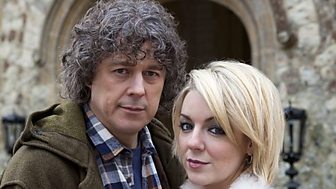Intriguing: ‘to arouse the curiosity or interest of by unusual, new, or otherwise fascinating or compelling qualities’
I’ve written about things that intrigue me before.
 In What Pleases The Human Eye, I wrote about my fascination with certain mathematical shapes, and how I find the fact that we humans find certain shapes pleasing to the eye (even when there seems no good evolutionary reason why) even more intriguing. Plus of course historical mysteries like The Shell Grotto in Margate, which I wrote about in A is for Amazing.
In What Pleases The Human Eye, I wrote about my fascination with certain mathematical shapes, and how I find the fact that we humans find certain shapes pleasing to the eye (even when there seems no good evolutionary reason why) even more intriguing. Plus of course historical mysteries like The Shell Grotto in Margate, which I wrote about in A is for Amazing.
Then there’s this fact: no.1 of the 7 ‘Things You Never Knew About Me‘, which I wrote as part of a blog chain:
- I’ve no idea who one of my great-grandfathers was. His name is missing from my late grandmother’s birth certificate, whilst the man her marriage certificate names as her father has the same surname as her mother’s maiden name…This is either a)fake b)a coincidence, because the surname is very common d)suggests incest as it is the name of a fairly close family member. a) is most likely.
That’s pretty intriguing. I’ve had help from the local archivist, too. No luck. I’ll probably never know who my great-grandfather was.
What else do I find intriguing? Anthropology. Human evolution, which I even studied it at degree level for a while. Some of the earliest hominid fossils discovered look nothing like each other, yet both have features that indicate they’re possibly our ancestors. You can discover more about this here on the Smithsonian site. How can that be? So much for the missing link…
Other things that have ‘fascinating or compelling’ qualities for me are Jonathan Creek (not th e last mini series though; what was going on there?!) and the new Sherlock Holmes. I like a good mystery with twists and turns. And Jodi Picoult novels (oooh, she’s so good).
e last mini series though; what was going on there?!) and the new Sherlock Holmes. I like a good mystery with twists and turns. And Jodi Picoult novels (oooh, she’s so good).
I love letters, postcards and diaries from the past too – I sometimes get my fix from the brilliant website Letters of Note. And finally, I’m constantly intrigued by the plethora of facts, references and articles offered to my tiny little brain via the marvellous skills of the Qi Elves (via Twitter and on the website – you can find out more about the Elves themselves here) and Maria Popova’s fabulous Brain Pickings website.
In fact, I may not be intriguing, but I’m pretty darn intrigued on a daily basis. So there.









 Love, love, love Robert Silverberg. I think we’ve reached my mid to late twenties now. I love all the different races, a huge world that’s so similar to ours in some ways and so different in others. Some intriguing ideas (having your morals tweaked in your dreams?) and the sense that he’s making subtle statements about real life (something I enjoy in TV sci-fi and fantasy as well. I’m often surprised the USA aired the Canadian produced Stargate – some of the criticism wasn’t that well-hidden!).
Love, love, love Robert Silverberg. I think we’ve reached my mid to late twenties now. I love all the different races, a huge world that’s so similar to ours in some ways and so different in others. Some intriguing ideas (having your morals tweaked in your dreams?) and the sense that he’s making subtle statements about real life (something I enjoy in TV sci-fi and fantasy as well. I’m often surprised the USA aired the Canadian produced Stargate – some of the criticism wasn’t that well-hidden!).
 I think I was 13ish when I started reading these, and 28 when I stopped with the publication of the last one, The Rivan Codex, in 1999. I loved them, particularly the last 3 (I prefer ‘spin-offs’ to prequels, as they also cover events you’ve already read about, just from a different point of view – a bit like Lion King 3!) The characters were well-portrayed and the books were full of humour, although sometimes Eddings did seem to lose his way a little. One day, I’ll read them all again (if I can wrest them from ArtyDaughter). I tried a couple of books from his next series but felt he’d lost it – as though he’d created all the characters he ever could and was just presenting them again, re-jigged and renamed. I was mad with him when he eventually revealed that his wife co-wrote them; she finally got her name on the cover in 1995, with the first spin-off, Belgarath the Sorcerer.
I think I was 13ish when I started reading these, and 28 when I stopped with the publication of the last one, The Rivan Codex, in 1999. I loved them, particularly the last 3 (I prefer ‘spin-offs’ to prequels, as they also cover events you’ve already read about, just from a different point of view – a bit like Lion King 3!) The characters were well-portrayed and the books were full of humour, although sometimes Eddings did seem to lose his way a little. One day, I’ll read them all again (if I can wrest them from ArtyDaughter). I tried a couple of books from his next series but felt he’d lost it – as though he’d created all the characters he ever could and was just presenting them again, re-jigged and renamed. I was mad with him when he eventually revealed that his wife co-wrote them; she finally got her name on the cover in 1995, with the first spin-off, Belgarath the Sorcerer.
 Brilliant. Read right through to the end and I guarantee you many ‘er…what?’ and ‘OMG!’ moments. It starts off a a simple tale of human outcasts from the near future travelling through a time gate to the Pliocene era to start again and live the simple life. Enter early hominids, aliens, funky mind powers, betrayal and enough twists and turns to make your head spin as though you’ve been sleep-walking and accidentally drunk all the Scotch again. These series truly hover on the sci-fi/fantasy border, but her other famous series (yes, ‘she’s’ a girl and Julian is her real name) are a little easier; The Rampart Worlds books are sci-fi and the Boreal Moon trilogy is fantasy. But they’re all… brilliant! Oh… I already said that. These four series took me from 14 to 35.
Brilliant. Read right through to the end and I guarantee you many ‘er…what?’ and ‘OMG!’ moments. It starts off a a simple tale of human outcasts from the near future travelling through a time gate to the Pliocene era to start again and live the simple life. Enter early hominids, aliens, funky mind powers, betrayal and enough twists and turns to make your head spin as though you’ve been sleep-walking and accidentally drunk all the Scotch again. These series truly hover on the sci-fi/fantasy border, but her other famous series (yes, ‘she’s’ a girl and Julian is her real name) are a little easier; The Rampart Worlds books are sci-fi and the Boreal Moon trilogy is fantasy. But they’re all… brilliant! Oh… I already said that. These four series took me from 14 to 35. 21 to 27ish. I think these are one of the few sets of fantasy novels I’ve turfed out as some point – or perhaps they’re in the loft. There are fifteen novels but I think I only read the first 10 or 11. They zip back and forth between different incarnations of the characters – similar events happening again and again until things were put right. Fascinating stories, but I think it started to feel a bit long and drawn out – perhaps that’s why I stopped reading them?
21 to 27ish. I think these are one of the few sets of fantasy novels I’ve turfed out as some point – or perhaps they’re in the loft. There are fifteen novels but I think I only read the first 10 or 11. They zip back and forth between different incarnations of the characters – similar events happening again and again until things were put right. Fascinating stories, but I think it started to feel a bit long and drawn out – perhaps that’s why I stopped reading them?

